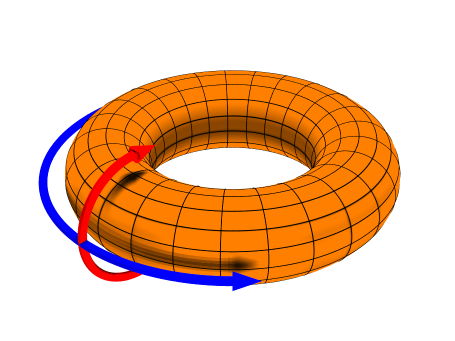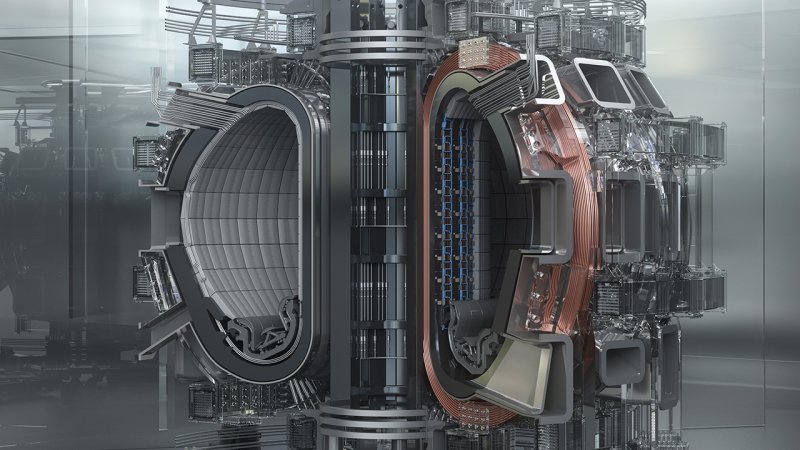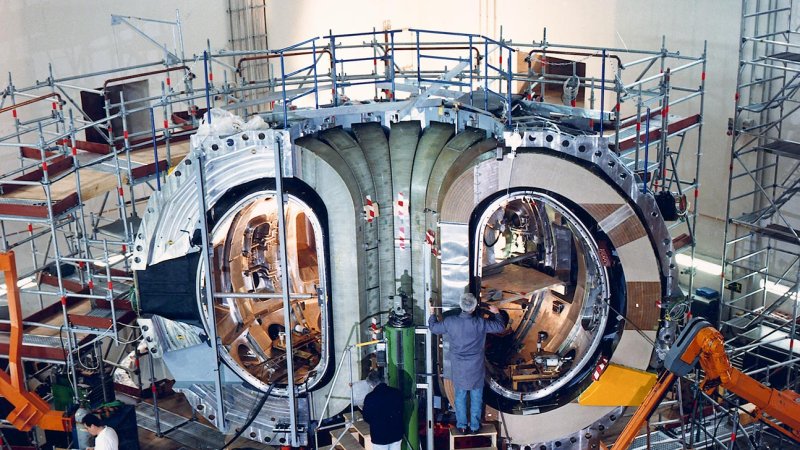
Toroidal Field
2 min read
The ideal magnetic cage for hot plasma is an infinitely long solenoid. As for practical use, the machine of finite size is better, so the solenoid is bent into the shape of a torus. If you imagine a donut, which has also the shape of a torus, then the rings on the donut corpus are toroidal coils. These provide the toroidal part of the magnetic field for magnetic confinement.
Toroidal Coils
Each tokamak has its own unique configuration of toroidal coils with varying number, size and shape. More toroidal coils around the torus means a smoother and thus better magnetic field, but their number is limited for several reasons. The first one is space — all coils have to go through the central part of the torus (donut hole) where they are packed close together. In spherical tokamaks, the central part of toroidal coils is reduced to as thin as possible. Some space has to be left between the coils to allow access to the chamber for diagnostics, maintenance, vacuum pumps, or fuelling.
Toroidal Coils of Current Tokamaks
The largest operating tokamak, JET, has 32 toroidal coils. Early tokamaks had circular toroidal coils with about 10 cm in diameter; modern tokamaks have them elongated into a “D” shape. ITER, the largest tokamak in the world now under construction, will have 18 toroidal field coils, each 17 metres high and 9 metres wide, capable of producing a magnetic field of up to 11 Tesla. Most experimental tokamaks around the world produce magnetic fields of about 3 Tesla.







